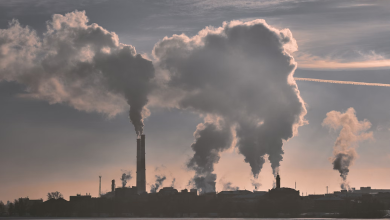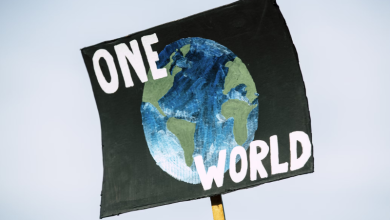Climate Change and Community Resilience: A Call to Action for Banks

Climate change is one of the biggest issues of our time, and it requires a collective effort from individuals, governments, and institutions. Banks, as powerful financial institutions with the capacity to drive change, have a crucial role to play in this battle. Join me and explore how banks can and should actively support communities in the fight against climate change.
The urgency of the climate crisis demands quick and decisive action. The support of individuals and every community is essential to combat climate change. Only collective action will work. And it is time for banks to recognize that they hold the key to a more sustainable future. This is a responsibility they must accept for the well-being of communities and the planet as a whole.
The Urgent Need for Climate Action
As the effects of climate change become increasingly evident – from more frequent and severe natural disasters to rising sea levels and extreme weather patterns – there’s no denying the urgency of addressing this global crisis. Communities around the world are already feeling the brunt of these changes, and the most vulnerable among us are the hardest hit.
The urgency of the climate crisis demands quick and decisive action. The support of individuals and every community is essential to combat climate change. Only collective action will work. And it is time for banks to recognize that they hold the key to a more sustainable future. This is a responsibility they must accept for the well-being of communities and the planet as a whole.
Beyond Profits: The Social Responsibility of Banks in Climate Action
A devastating 1950s drought hit the Great Plains and Southwestern U.S. In Texas, it was worse than the 1930s Dust Bowl. From Nevada to Kentucky, crops were destroyed and many farms were lost.
The drought transformed many towns. Some struggled for decades after young adults fled the crisis for better opportunities. Others recovered, sometimes thriving more than before the drought.
Read More: A New Tale: Climate Change is Uprooting Innocence, Children!
Research showed that banks shaped communities during and after the crisis. Understanding decades-old events can warn of climate change’s devastation and help prevent population loss and economic destruction.
Credit helps people and communities survive and thrive after extreme weather events.
Bank loans helped farmers survive the 1950s drought and invest in irrigation systems. Farms collapsed and young people left communities when lending was scarce, leaving ageing populations with rising mortality, decreased birth rates, and struggling local economies.
Communities should not be cut off when they need help.
Banks should not refuse coastal home mortgages without first assessing a community’s climate change adaptation capacity. Lending less is the opposite of what towns need to survive extreme weather, and banks must recognise their vital role in climate change resilience.
Communities can adapt and grow from extreme weather with the right support.
After the 1950s drought, farmers with loans switched to drought-resistant crops, irrigated more land, and used tractors more. Over the next few decades, many of these farms became highly successful, surpassing farms in drought-free areas in productivity. Drought-affected farms without credit lost value and other businesses, especially retail and manufacturing, suffered.
Crisis can spur innovation if people have the resources. We can build resilient communities and stronger, more productive economies by funding adaptation.
Banks are crucial to climate change response. We must provide global funding for community adaptation, especially in developing nations. Climate change will hit low-income countries hardest, but they have few resources to adapt. Climate change may devastate beyond their borders. By ensuring Central American financing, the US can help prevent climate migrants from entering our southern border.
Instead of avoiding climate risk, US banks should lend to well-designed adaptation efforts in communities most at risk. Low-income, people of colour, and immigrant business and home owners are more likely to be devastated by extreme weather and denied the financing they need to survive. Leaving neighbourhoods or towns behind could hurt them for decades, affecting the U.S. economy.
Financial institutions and governments should prioritise helping people stay in their communities, innovate, and thrive in our rapidly changing climate when physical adaptation is possible. The 1950s drought affected banks and communities for decades, and climate change will cause even greater disruption.
Past isn’t always prologue. We should learn from history to mitigate climate change’s worst effects.



